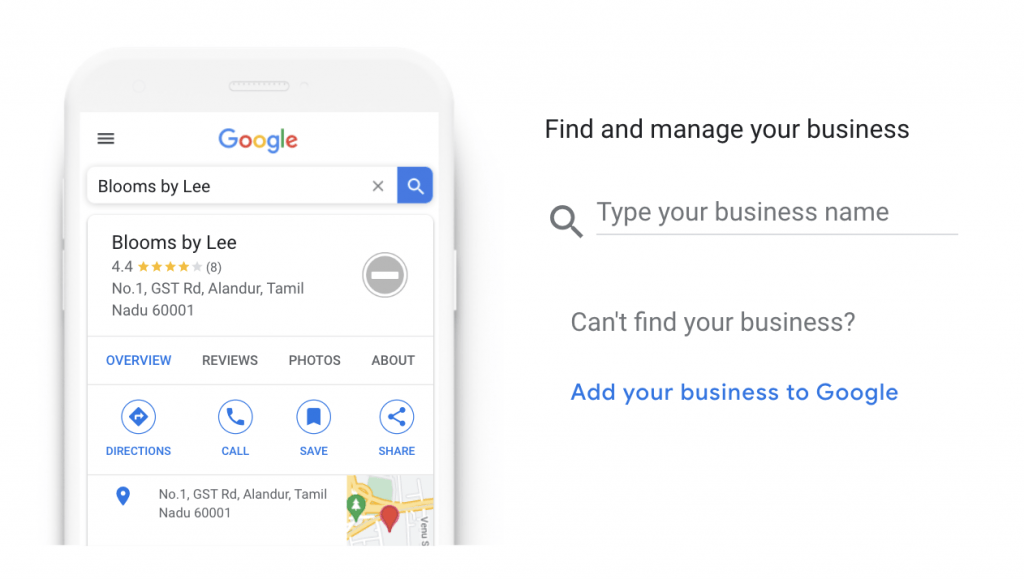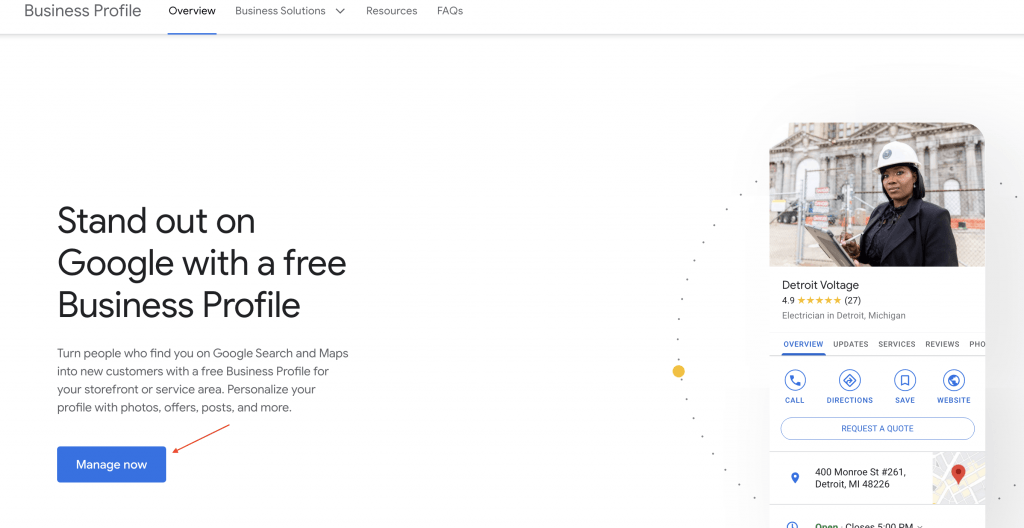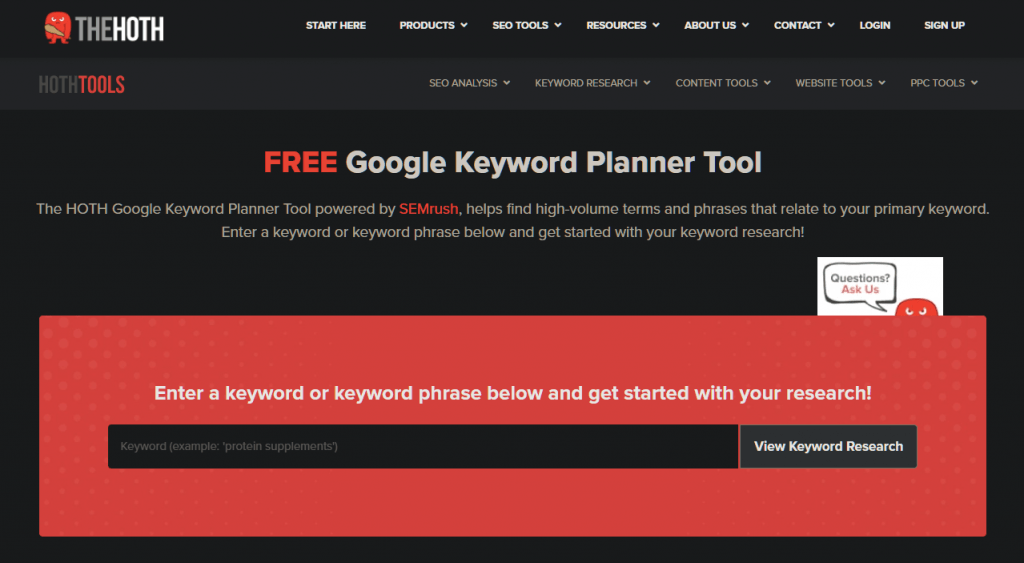Quick Links
Want to boost the online presence of your medical practice to acquire more patients and enhance your reputation?
Then you need to implement a medical SEO strategy to rank your practice’s website higher on search engines like Google and Bing.
After all, 82.8% of patients use search engines to find healthcare providers, so if you aren’t ranked in a top spot (or in the local 3-pack that appears in position zero), you’re missing out on tons of potential patients.
Yet, before the introduction of local search, SEO for doctors was a lot more difficult.
That’s because to rank in the top 5 on a search engine like Google, it took lots of clout from high-authority backlinks, loads of organic visitors each day, and a flawless reputation. As a result, the top-ranking healthcare practices were extremely dominant and difficult to outrank.
That all changed with Google’s local 3-pack and the prominence of local SEO.
Now it’s entirely possible for a smaller practice to appear at the very top of the search engine results pages (SERPs) for localized keywords (i.e., ‘best doctor in Round Rock’).
That’s why we’ve put together this extensive healthcare SEO guide to help your practice reach the first page of Google. Read on to discover how you can develop a winning SEO campaign to attract tons of prospective patients to your medical website.
Local SEO and Google’s 3-Pack
If you’re relatively new to the world of search engine optimization, you may be wondering how local SEO differs from standard SEO.
In a nutshell, local SEO helps you rank for search queries that are location-specific. So if a query or keyword contains a city, neighborhood, state, or other location – it’s a local search.
Conversely, if a keyword does not contain a location, it’s a general search and involves the entirety of the internet.
Also, sometimes users include ‘near me’ in their search, such as ‘dentists near me.’ In that case, the search engine will use their IP address to determine their location, so it still counts as a local search.
Then there’s the Google 3-Pack, also known as the Google Local Pack, which displays the top 3 local businesses for a local search.
For instance, if a user searches for ‘best doctor in Round Rock,’ the top 3 physician’s offices are optimized for that keyword and have a Google Business Profile listing. A Google Map will appear with pins placed on each physician’s office, enabling potential patients to see which offices are closest to them.
Along with the name and link to each doctor’s office, the 3-pack also displays the following:
- A rating out of five stars
- The address
- If the office is currently closed or open
- A quote from a local review
As you can see, the offices that appear in Google’s Local Pack feature more information than those in the organic search. Not only that, but they show up in position zero, which is higher up on the page than the #1 ranked organic search result.
Why does local SEO matter for healthcare websites?
As stated before, ranking your physician’s office in a top spot for general SEO terms like ‘best doctor’ is quite difficult due to the fierce competition.
For example, the #1 organic search result on Google for ‘best doctor’ is bestdoctors.com, a nationwide telemedicine service that connects users with over 50,000 world-renowned specialists.
It’s a massive operation that’s clearly put a ton of effort and resources into obtaining its top-ranking spot on Google search.
How do we know this?
By running the domain through a backlink checker tool, we discovered that it has a domain rating of 74 (for reference, any rating over 60 is considered excellent) and has over 38,000 backlinks, 94% of which were dofollow links (which matter for SEO).
That’s a rock-solid backlink profile that any local physician’s office wouldn’t stand a chance of competing with, let alone surpassing.
Let’s compare their astronomical backlink profile with the top result from the Google 3-Pack for the keyword ‘best doctor Round Rock.’ Since we’ve added a location to the keyword, the 3-Pack now shows up in position zero.
The top-ranking result is Brushy Creek Family Physicians.
Taking a peek at their backlink profile, they have a domain rating of 1.4 and only have 2,600 backlinks, 48% of which are dofollow links.
That’s a pretty measly rating in comparison (although it’s perfectly acceptable for a local physician’s office), but they were able to climb to the top of Google’s 3-Pack anyway. That’s a true testament to the power of local SEO for doctors, so you definitely don’t want to ignore it.
Local SEO Strategies for Medical Practices
Since you know local SEO is the way to go for your physician’s office, let’s learn how to master the basics so you can start attracting lots of new patients.
Local SEO is very much its own thing and differs heavily from traditional SEO. You’ll want to build local backlinks and look for local keywords instead of general queries. Beyond that, creating and optimizing a Google Business Profile is an absolute must for local SEO.
Staying consistent with your NAP (name, address, and phone number) is another crucial local SEO factor, as inconsistent information will confuse both Google and your patients.
Also, local business directories like Yelp and Yellow Pages will help you further extend the online presence of your practice. There’s a lot to know, so let’s dive right in.
Build a user-friendly website
First and foremost, you need to optimize the web design and user experience of your website.
Why is that?
It’s because a cluttered website that’s difficult to navigate will confuse and discourage your users, which will likely lead to them leaving your website to fill their needs elsewhere.
To avoid this, you’ll want to build a website that’s effortless to navigate and gets straight to the point.
In today’s age, the average person has to contend with more ‘noise’ than ever before. By noise, we mean ads, emails, social media posts, pop-up ads, instant messages, phone calls, and tons more.
As a result, the average internet user only has so many calories they’re willing to spend to figure out a website before clicking away.
If your healthcare website greets users with a photo of your building and a five-paragraph-long story about how you graduated medical school and opened your practice, you’re drowning your audience in noise.
Instead, you should clearly communicate what it is you do and how you can help your patients.
For instance, something like “Award-winning physicians in (city) that place the needs of their patients first” instantly lets your visitors know what you’re all about and how you can help them. Also, place a button on the top of the page that says, “Book an appointment now,” so your potential patients immediately know how to contact you.
For your navigation, make sure it’s easy to navigate to any page on your website by grouping your pages together into related categories.
Create multiple types of content
Next, you’ll want to establish your practice as a thought leader in your field – and there’s no better way to do that than with high-quality content.
Regularly releasing content will help you rise through the search engine rankings while educating and informing your audience, so it’s well worth the investment.
To get the best results, you should strive to release a mix of a few types of content, such as:
- Informative blog posts on health and wellness topics
- Detailed infographics containing medical facts and statistics
- Symptom checklists for various conditions
- Healthcare podcasts
- eBooks
These types of content are staples for digital marketing and content marketing, and it’s because they get results.
For instance, creating colorful infographics containing relevant statistics is a great way to obtain lots of quality backlinks – and videos are effective at attracting new prospective patients (especially if you upload them to platforms like YouTube).
Blogging should be a regular thing for your practice, either by designating someone in-house to write them or hiring freelancers – as 80% of companies report that blogs drive organic traffic.
To find the most success with your blog posts, you need to cover relevant topics that your audience wants to see. That means you’ll need to truly understand your target audience (reading Reddit posts and joining related social media groups will help you generate ideas).
The more quality content you release, the more your audience will view you as a thought leader, and your online reputation will grow. That means the next time they have a pressing healthcare question or issue, you’ll be the first resource they check.
Create a Google Business Profile (formerly Google My Business)
You won’t get very far with local SEO if you don’t have a Google Business Profile (GBP).
That’s because GBP is where Google draws the data from for its 3-Pack. Google’s crawlers will reference your Google Business Profile to uncover your:
- Name
- Address
- Reviews and rating
- Hours of operation
- Location on Google Maps
So if you don’t have a GBP, you stand no chance of appearing in the 3-Pack, so it’s imperative that you create one.
Google will automatically create a GBP listing for some businesses and medical practices. As such, you may discover that there’s already a GBP listing for your office, in which case you’d need to claim it.
How do you find out if you already have a listing?
Simply go to Google search and enter the name of your medical practice along with your city and state.
If you have a Google Business Profile, your business will appear in a knowledge panel or Google Maps. If you haven’t claimed the listing yet, you’ll see a link at the bottom that says, “Own this business?”
Click the link and enter your business name. Next, Google will need you to verify that you own the practice. The most common way is to verify your business by postcard.
It works like this – Google mails your office a postcard containing a verification code. Once you receive it, you log into your GBP profile and enter the code to verify that you’re the owner.
Adding your business to Google
If your medical practice does not have a GBP listing, you’ll need to create one from scratch. The good news is that it’s a straightforward process that won’t take you much time at all.
Start by hitting the Manage Now button on the GBP homepage. Enter your business name, and hit Continue.
Next, Google will ask what type of business you run, and the options are:
- Online retail
- Local store
- Service business
You have the ability to check more than one option, so be sure to select all that apply.
Most physician’s offices will need to select Local store, as your patients visit your office to receive care. Yet, if you also sell products online, you’ll need to choose Online retail as well. If you make house calls for your patients, then your practice would also qualify as a Service business.
The next step is to select a business category for your practice.
What’s that?
GBP uses business categories to classify the businesses it lists, such as real estate agencies, toy stores, dentists, and, you guessed it – doctor’s offices.
This step will directly affect your performance in the local search, so it’s crucial not to rush it. That’s because GBP’s signals play a huge role in Google’s local search algorithm, so nailing your category will give you a much-needed boost.
GBP allows you to select one primary category and up to nine secondary categories. So if you’re a physician’s office that also offers psychiatry or sells products online, you’ll want to include them as secondary categories.
After that, all that’s left is to enter your business address, phone number, and website. You’ll also need to verify your business via postcard, but then you’ll be all set.
Optimizing your Google Business Profile
If you want to become a rockstar in the local search rankings, simply creating a GBP listing isn’t enough. Instead, you’ll need to optimize your listing to make it as accurate and complete as possible.
Log in to your GBP profile by signing in on the homepage.
Your first step should be to fill out all the information Google requests from you.
In particular, you’ll want to ensure that your NAP is accurate and current. If you’ve recently changed locations, make sure to update your address so you won’t confuse Google or your new patients.
Also, use relevant keywords throughout your GBP description to bolster your SEO profile. However, it’s essential to remain conversational, so don’t spam or overstuff keywords, as that won’t help you.
You should also strive to include information that distinguishes you from the competition in your description. Do you offer anything unique to your patients that they can’t find anywhere else? Are your skills and expertise unlike any other physicians in the area? If so, don’t be shy about mentioning it.
Next, it’s time to fill out your profile with a ton of content that will help you get noticed online, such as:
- Profile picture
- Cover photo
- Hours of operation
- The areas you serve
- When you founded your practice
- Phone number
- Videos
- Pictures
- A link to your website
Last but not least, add the appointment booking link to your GBP profile listing, as it will enable prospective patients to book an appointment with you without having to redirect to your website first.
Add health and safety attributes to your listing
This SEO tip is particularly important for medical practices, especially post-pandemic.
That’s because ever since the COVID-19 outbreak, people have wanted to know what health and safety measures establishments have in place before visiting them.
As such, Google has recently added health and safety attributes to GBP listings.
What are those?
They include safety measures such as:
- Temperature checks
- Mandatory masks
- Staff precautions (hand washing, etc.)
- Waiting room policy (if patients must wait in their car or not)
- Whether you accept walk-ins
Including these attributes on your GBP listing will let your patients know what to expect when visiting your practice. They’ll provide peace of mind for patients, as they’ll have faith that your offices are clean and safe.
Which doctor’s office would you rather visit?
Office A has no health and safety attributes on its listing and only includes its NAP.
Office B states that all staff wear masks, walk-ins are accepted, and they do temperature checks.
As you can see, including this information will make your practice appear more professional and caring toward patients.
Use Google Posts
Another tool that makes SEO for doctors easier is Google Posts.
What’s that?
It’s a free tool that allows you to display 10 of your most recent posts, and they’ll stay live for up to 7 days.
That means you can feature your most recent blog posts, announcements, offers, promotions, and other types of content.
Not only that, but Google Posts lets you use text and images in your posts, and you can include CTAs that link to your landing pages.
These posts are great because they provide quick information for prospective patients and they encourage them to take action.
For instance, if you’re offering discounted flu shots or COVID-19 vaccines, you should include this information as a Google Post. That way, your prospective patients will see this information front and center whenever they view your GBP listing.
Yet, it’s crucial to regularly update your Google Posts, as you don’t want to include any outdated information, as that can tarnish your reputation. So as soon as a promotional offer ends, make sure to update your Google Posts.
Pro tip: You’ll need to be extremely concise with the copy for your Google Posts, as there’s a 1500-character limit. That’s because these posts appear ‘above the fold’ on your GBP listing, which refers to the top half of a web page where there isn’t room for more than a few words.
It’s completely free to use Google Posts as long as you have an existing GBP listing, so don’t forget to leverage this powerful tool.
Conduct local keyword research
Keyword research is just as vital to local SEO as it is too general SEO, albeit with a few tweaks. In particular, local SEO involves using lots of long-tail keywords or keywords that contain more than two phrases.
You can use our free keyword planner tool to uncover desirable local keywords.
Remember to include location-specific phrases like ‘near me’ or ‘best doctor in (city).’
How do you know which keywords to choose?
Our keyword planner tool provides all the information you need to know. In particular, the two metrics that matter the most for keywords are search volume and keyword difficulty.
Search volume refers to how many users are actively searching for the keyword. If the search volume is high (over a few thousand), it stands a good chance of generating lots of organic traffic for you.
Yet, you also need to pay attention to the keyword difficulty score, or KD for short.
That refers to how difficult it will be to outrank the existing websites in the top 5. As stated before, established websites that have incredible backlink profiles can be next to impossible to outrank. As such, keywords that have high KD scores (above 50) will pose serious challenges.
Therefore, the most desirable keywords will have a high search volume and low keyword difficulty score.
Build local backlinks
For local SEO for doctors, you need to engage in local link-building. That means you’ll want to acquire high-authority backlinks from local websites.
How do you do that?
There are a few ways. First, you can write guest posts for other local doctors and acquire backlinks that way. Or you can sponsor a local scholarship or school team and get backlinks that way.
There are also local business directories and newspapers that can provide backlinks. For newspapers, you can create PR content or medical advice in exchange for a backlink.
Concluding Thoughts: SEO for Doctors
With the advent of the local search and 3-Pack, it’s now possible for small doctor’s offices to dominate the local search engine rankings.
By researching local keywords, acquiring local backlinks, and claiming a GBP listing, you stand a much better chance of securing a top spot on the SERPs.
Do you not have enough time to focus on an SEO campaign at your medical practice?
If so, don’t wait to check out our five-star managed SEO services at HOTH X. Our experts will work around the clock to formulate a winning SEO campaign for your practice, so get in touch with us today.















Hi Bryan, I read your suggestions for improving the local exposure of doctors’ offices or clinics that offer local services. As you have already said, it is essential to use local SEO strategy as it is impossible for “small medical practices” to fight with large clinics that invest large sums of money for their online presence.
The “Create multiple types of content” infographic really impressed me and is a topic I often talk about with doctors who want to update their websites.
Unfortunately I always find myself faced with requests that don’t aim to be found more easily by customers but to satisfy the ego of the doctors themselves or the owners of the small clinics I work with. Some ask for example: I would like the logo bigger, I would like the picture of our staff to be in the foreground ……..
These requests are understandable, however, doctors often forget what are the real reasons that bring a potential patient into their practice.
I’ve been working with a cardiologist lately who gave me too poor descriptions of their services.
That doctor specializes in the treatment of heart problems related to cholesterol but in his texts there was no indication of those therapies.
I suggested adding related terms such as LDL, HDL, lipid panel exam….. these are highly researched keywords used by people suffering from those pathologies and they also make a huge difference at the local SEO level. Since I was able to convince the doctor to add new articles, there has been a 5x increase in visits to the site. All this has also led to new patients who have found the doctor’s office thanks to local research.
Let me add that convincing a doctor is very hard work 🙂
Great articles, I am thinking to provide dentist seo service. Thanks.
Insightful and practical! This article on SEO for doctors offers clear guidance on attracting more clients through effective search engine optimization. It’s packed with useful tips and strategies that are easy to understand and implement. I love how it tailors SEO advice specifically for healthcare professionals, recognizing the unique challenges they face. A valuable resource for any medical practice looking to boost its online presence and reach more patients. Great job!
Great article, Sam Franke waiting for your next work . This post clears all my questions. Thank You.